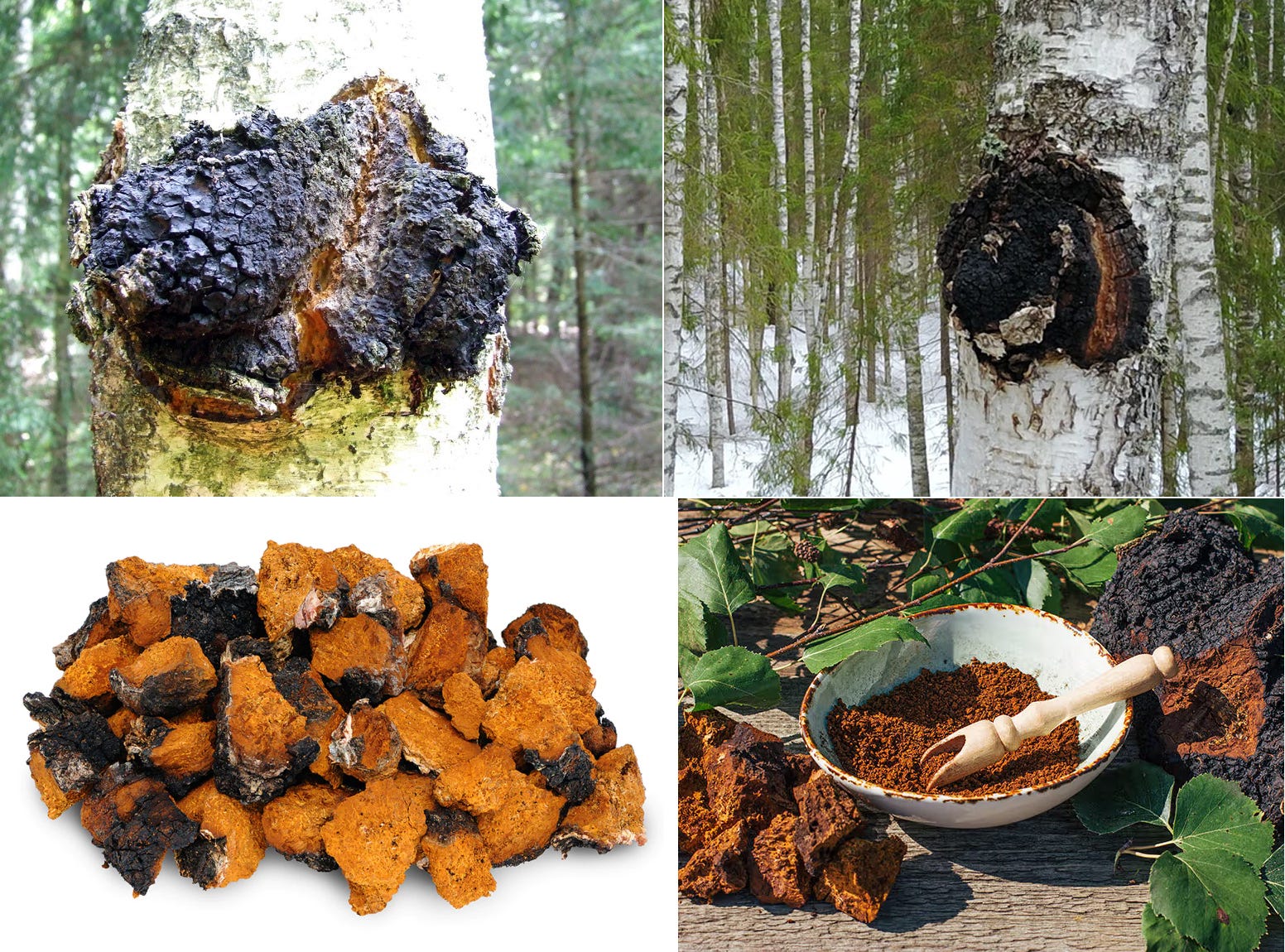Papers Reviewed:
2021 July (Szychowski et al) - Inonotus obliquus – from folk medicine to clinical use (Poland)
2021 April (Lu et al) - Recent Developments in Inonotus obliquus (Chaga mushroom) Polysaccharides: Isolation, Structural Characteristics, Biological Activities and Application (China)
2020 May (Thomas et al) - Chaga (inonotus obliquus): a medical marvel but a conservation dilemma? (UK/Egypt)
2023 Nov (Cheung et al) - Wild Chaga (Inonotus obliquus) modulates inflammation, neural cell survival and inhibits proliferation of cancer cells (Canada, published in Pharmacological Research - Modern Chinese Medicine)
2023 Nov (Plehn et al) - Chaga mushroom triterpenoids as adjuncts to minimally invasive cancer therapies: A review (Canada)
2021 July (Szychowski et al) - Inonotus obliquus – from folk medicine to clinical use
Inonotus obliquus (I. obliquus) (Ach. ex Pers.) Pilát, belonging to the family Hymenochaetaceae, is a black-brown plant parasitic fungus
I. obliquus is a primary tree parasite causing decomposition of live trunks. It has been seen on many trees species such as alder, beech, maple, rowan, hornbeam, poplar, oak, ash, willow, plane-tree, chestnut, and walnut, but the main hosts of I. obliquus are various species of birch
I. obliquus infects approximately 30–50-year-old trees through wounds in the bark and can grow on the trunk for another 30–80 years
A few years after penetrating the trunk of live trees, it produces sclerotia (vegetative or asexual fruiting bodies) with a lumpy irregular shape, cracked surface, and black-brown color
interior of sclerotium is made of rust-brown, yellow-veined, dense mycelium
sclerotia grow very slowly, reaching a diameter of > 10 cm after 10–15 years
after host tree dies, annual fruiting bodies of the sexual stage appear
develop in the warm season of the year in places with the most advanced rot
This type of fruiting bodies may have considerable sizes (up to 3–4 m in length and up to 50 cm in width) and are eaten very quickly by insects
Medicinal Properties
Listen to this episode with a 7-day free trial
Subscribe to COVID Intel - by Dr.William Makis to listen to this post and get 7 days of free access to the full post archives.














